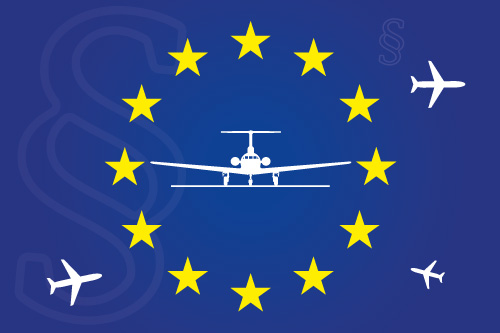Temporary Admission: how is the six-month period of stay practically interpreted?

The survey was made before Brexit in 2020, which is why the UK, and the Isle of Man are included. The UK part is still relevant for aircraft flying to the UK under a UK Temporary Admission.
 Most aircraft have international routes, and many non-EU operators use the Temporary Admission procedure when flying within the EU. The basic simplified rule is that an aircraft owned, operated, registered, or based outside the EU can use the Temporary Admission procedure. The period of stay for private flights is set to a maximum of six months. Still, there has been an ongoing discussion in the aviation industry about how this rule shall be interpreted when discussing multiple stays over a period. Therefore, we have commissioned another verification survey about this subject.
Most aircraft have international routes, and many non-EU operators use the Temporary Admission procedure when flying within the EU. The basic simplified rule is that an aircraft owned, operated, registered, or based outside the EU can use the Temporary Admission procedure. The period of stay for private flights is set to a maximum of six months. Still, there has been an ongoing discussion in the aviation industry about how this rule shall be interpreted when discussing multiple stays over a period. Therefore, we have commissioned another verification survey about this subject.
The result
The feedback is almost unanimous; a new six-month period begins each time the aircraft re-enters the EU. As shown below in options A and B, two other interpretations have been fully rejected as viable options. Only Spain and Greece have answered differently. Please notice that the answer from Spain is incoherent and obscured and does not indicate how a new period can be initiated.
An aircraft cannot stay in the EU on a continuous basis
Does this mean that an aircraft can stay persistently at the same airport if the aircraft is flying in and out continuously to initiate a new period of stay? The answer is no. The Temporary Admission procedure is meant to accommodate non-EU-resident visitors flying within the EU, and the procedure was never meant to accommodate aircraft with a fixed EU base nor accommodate aircraft that spend the majority of their life within the EU. If an aircraft has a fixed base in the EU, has booked permanent hangarage, or does long-time parking, the aircraft can no longer be considered a visitor. This behavior will be considered equivalent to the pattern of an EU-resident or -domiciled aircraft. We believe that a non-EU registered aircraft with a behavior equal to an EU-resident or -domiciled aircraft must be fully imported.
Please also see survey 8: “What is the limit for multiple continuous stays at the same place?”
Figure 1: Corporate aircraft using Temporary Admission (TA) in various EU member states
How is the 6 months period defined and which of the three options can be used?
| Questions | DK |
DE |
UK |
IM |
IE |
NL |
MT |
FR |
IT |
ES |
PT |
GR |
|---|---|---|---|---|---|---|---|---|---|---|---|---|
| A: It is six consecutive months per calendar year or a 12-month period. | No | No | No | No | No | No | No | No | No | Yes | No | No |
| B: It is six non-consecutive months per calendar year. | No | No | No | No | No | No | No | No | No | No | No | Yes |
| C: If the aircraft is flying out of the EU after the first period (after less than six months), the TA can be renewed immediately. | Yes | Yes | Yes | Yes | Yes | Yes | Yes | Yes | Yes | No | Yes | No |
| The results are based on answers from international consulting firms in the respective countries. | ||||||||||||
| Short & Sweet mail no. 9 | Part 1: Using TA – what is the Supporting Document, and how do you use it? |
| Short & Sweet mail no. 11 | Part 2: Using TA – what do customs look for during a ramp check, and why? |
| Short & Sweet mail no. 14 | Part 3: Using TA – in which scenarios will an operator need help or guidance? |
| Short & Sweet mail no. 21 | Part 4: Using TA – how do you prepare to handle a customs ramp check? |
Important things to know about Temporary Admission
Operators should be aware that different interpretations of the TA procedure exist between member states. Thus, it is important to have a competent customs agency outline the correct use and understanding based on the specific setup. The problem with local interpretations is often related to flights within France, Spain, Portugal, Italy, Greece, and less often other places. Click here to see a list of the known grey zone areas where different interpretations of the TA procedure exist and where an operator often needs guidance to use TA safely. None of the grey zone areas create problems for using TA if correctly handled and documented.
How can we help?
If you have questions about the above, please do not hesitate to contact us.
